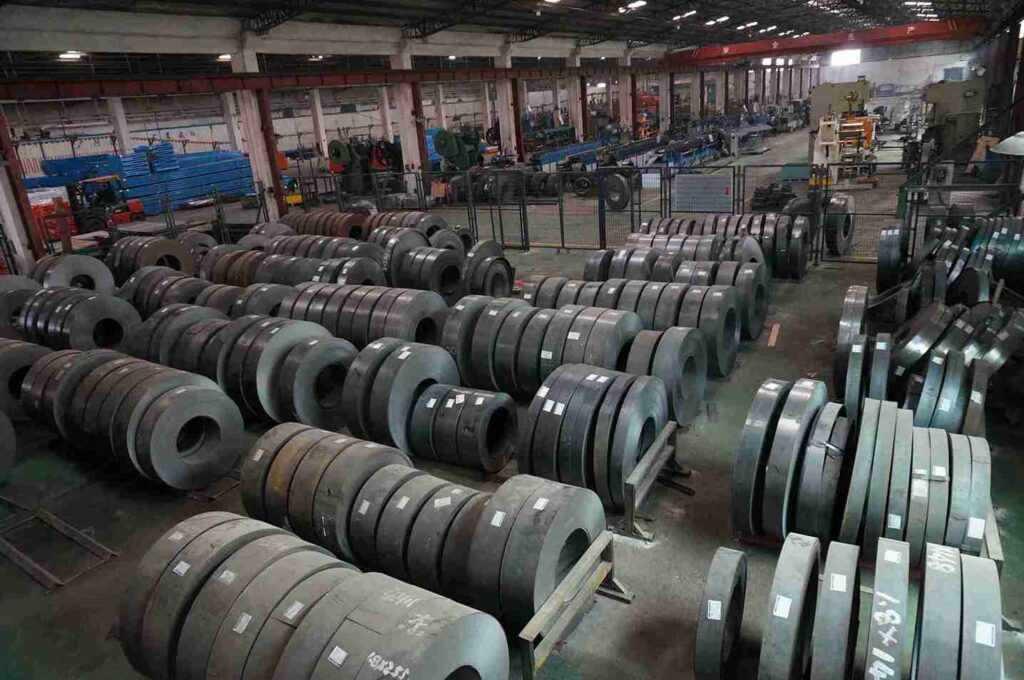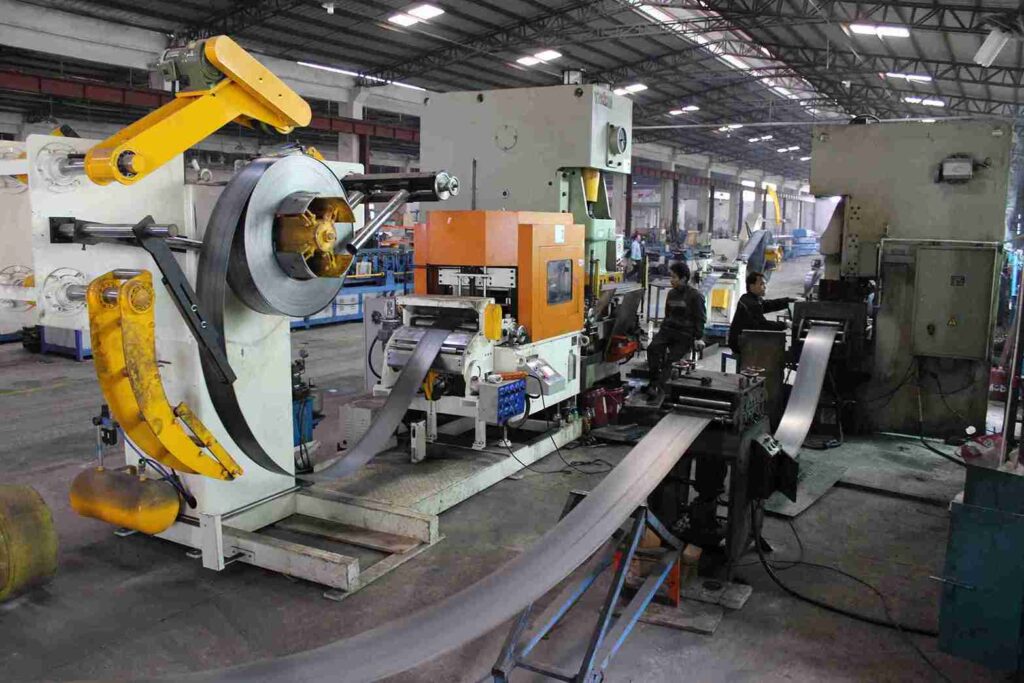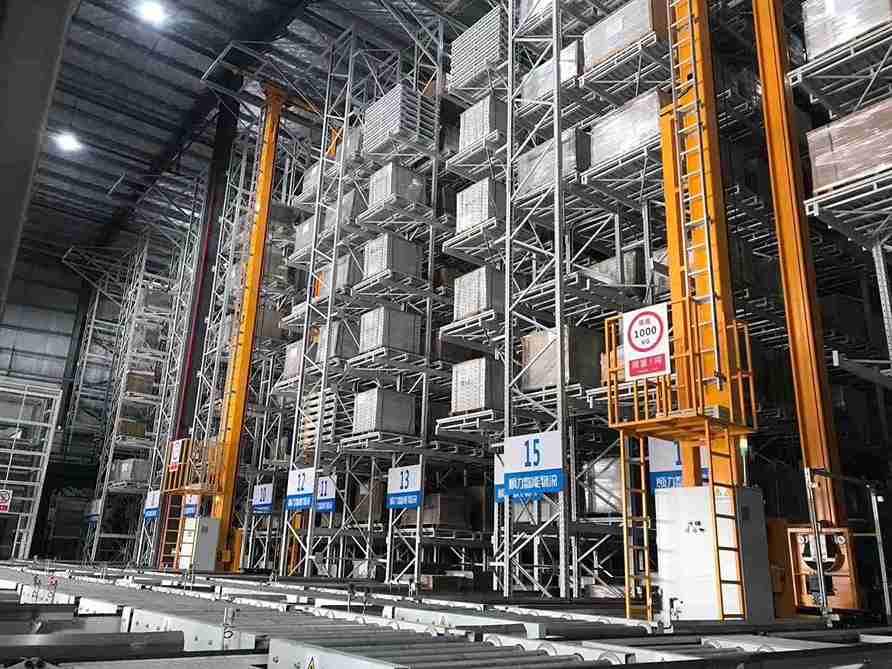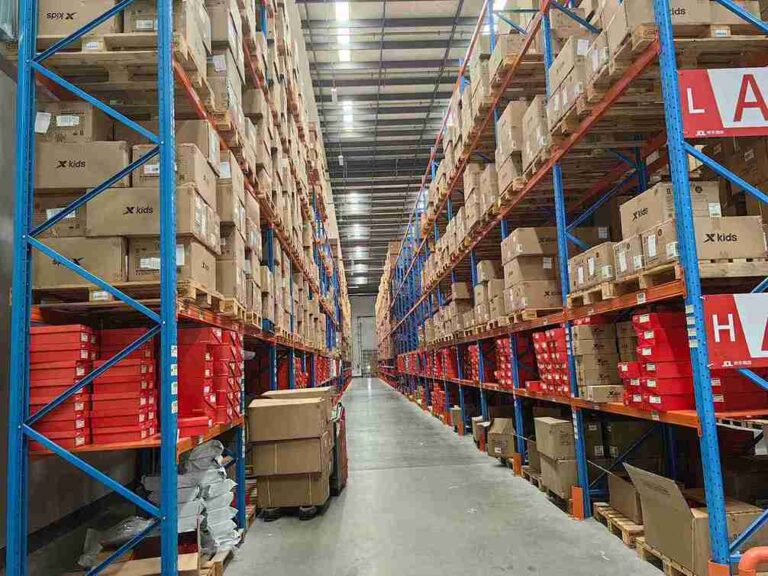📐 "First 50 Enterprise Queries Get Custom 3D Warehouse Design" Plan

The Financial Justification: Calculating the ROI of a Professional Racking System
For any business leader, the decision to invest in a new storage system ultimately comes down to return on investment (ROI). Partnering with an experienced professional racking supplier is not an expense; it is a capital investment with a clear and compelling financial payback. A true professional racking supplier does not just provide a quote for metal; they provide a detailed business case that outlines the tangible financial benefits. These calculations go far beyond the simple cost of the equipment and installation.
A meticulous professional racking supplier will help you quantify gains in several key areas:
Reduction in Operational Costs: This is the most significant area of savings. By increasing storage density, a business can often avoid the need to lease or build additional warehouse space, a massive capital and operational expenditure. Furthermore, optimized layouts designed by a professional racking supplier reduce travel times for forklifts and pickers, directly lowering labor hours and energy consumption. For instance, a VNA (Very Narrow Aisle) system designed by a competent professional racking supplier can cut forklift travel distances by over 50%, a direct saving on labor and battery charging or fuel costs.
Improvement in Inventory Accuracy and Reduction in Shrinkage: Disorganized storage leads to lost inventory, misplaced stock, and costly picking errors. A well-designed system from a professional racking supplier enforces order and logic, which, when integrated with a WMS, can drive inventory accuracy to near 100%. This reduces the financial loss from obsolete or lost stock and improves order fulfillment accuracy, enhancing customer satisfaction.
Enhanced Safety and Lowered Insurance Premiums: A structurally sound and logically organized warehouse is a safe warehouse. By eliminating clutter and ensuring safe load capacities, a system from a reputable professional racking supplier significantly reduces the risk of accidents, product damage, and costly racking collapse. Many insurance companies offer reduced premiums for facilities that can demonstrate a professionally designed and installed storage system with regular safety audits, another direct financial benefit.
Increased Throughput and Revenue Capacity: An efficient warehouse can process more orders with the same or fewer resources. This increased throughput directly translates into the ability to handle higher sales volumes without proportional increases in overhead. For a growing e-commerce business, this scalability, engineered by a forward-thinking professional racking supplier, is critical to capturing market share without operational bottlenecks.
The role of the professional racking supplier is to translate these operational improvements into a clear financial model, demonstrating a typical payback period that often ranges from just 18 to 36 months, making it one of the most sound investments a logistics-dependent business can make.

Beyond the Quote: The Critical Differentiators of a True Professional Racking Supplier
In a competitive market, many companies offer metal shelving and racking. However, there is a profound difference between a simple fabricator and a dedicated professional racking supplier. Understanding these differentiators is crucial for any business making a strategic procurement decision. The value of a professional racking supplier is embedded in the services and expertise that surround the physical product.
1. Certified Engineering and Design Expertise
This is the cornerstone of a legitimate professional racking supplier. Their design process is not performed by salespeople but by certified structural engineers who specialize in warehouse storage. These engineers use sophisticated software to perform dynamic load analysis, seismic calculations (for relevant regions), and impact force simulations. They ensure that every component, from the upright frame to the beam lock, is rated for the specific demands of the application. This engineering rigor guarantees not only safety but also optimal performance and longevity. A true professional racking supplier will provide sealed engineering drawings as part of the project deliverables, a document that is often required for building permits and insurance compliance.
2. A Comprehensive Project Management Approach
A complex racking installation is a significant project with many moving parts: manufacturing, shipping, logistics, site preparation, and installation. A top-tier professional racking supplier acts as the single point of responsibility, managing the entire project lifecycle from conception to completion. Their project managers coordinate with your team, the installation crew, and any other contractors to ensure the project stays on schedule and on budget. This eliminates the finger-pointing and delays that can occur when dealing with multiple separate entities. The assurance of having a seasoned professional racking supplier managing the entire process is invaluable.
3. Uncompromising Commitment to Quality Control and Material Integrity
Not all steel is created equal. A distinguished professional racking supplier has rigorous quality control protocols from the mill to the finished product. They specify high-tensile steel with consistent material properties and employ manufacturing processes like robotic welding and automated punch lines to ensure every component is identical and perfectly formed. The powder-coat or paint finish is not merely for aesthetics; it is a critical protective layer. A reputable professional racking supplier will use advanced pre-treatment and electrostatic painting processes to achieve a durable, scratch-resistant finish that protects against corrosion, essential for humid environments like those found in Southeast Asia or for cold storage applications.
4. Global Sourcing and Localized Support
For businesses operating across borders in regions like Southeast Asia, the Middle East, and Africa, the ability of a professional racking supplier to support a global footprint is essential. The leading professional racking supplier entities have manufacturing hubs and a network of local partners that allow them to efficiently manage logistics, navigate import regulations, and provide timely on-the-ground support. This global-local model ensures that a client receives the same quality and engineering standards whether they are in Dubai, Jakarta, or Lagos, backed by a local team that understands regional challenges and can provide rapid response for maintenance or expansion needs.

The Future-Proof Warehouse: Designing for Tomorrow’s Supply Chain
The only constant in modern logistics is change. Consumer demands shift, new technologies emerge, and business models evolve. A warehouse built for today’s needs will be obsolete in five years if it is not designed with adaptability in mind. This is where the strategic vision of an innovative professional racking supplier becomes indispensable. They design systems that are not just solutions for the present, but flexible platforms for the future.
Modularity and Reconfigurability
A forward-thinking professional racking supplier champions modular design principles. This means creating systems with standardized components that can be easily disassembled, reconfigured, and expanded. If a business needs to change its inventory profile from large pallet loads to smaller, more frequent e-commerce picks, a modular system from a skilled professional racking supplier can be adapted. Uprights can be relocated, beams can be adjusted, and entire sections can be redesigned without requiring a complete tear-down and replacement. This modularity protects the client’s initial investment and provides the operational agility needed to respond to market changes.
Inherent Compatibility with Emerging Technologies
The warehouse of the future will be increasingly data-driven and automated. A visionary professional racking supplier designs infrastructure with this in mind. This means:
Providing Structure for Data Capture: Designing racking with integrated mounting points for RFID readers, barcode scanners, and IoT sensors that monitor inventory levels and environmental conditions.
Precision for Robotics: Ensuring that tolerances, clearances, and surface finishes are compatible with the demands of autonomous mobile robots (AMRs) and robotic picking arms. The structural grid provided by the professional racking supplier becomes the physical framework upon which automation operates.
Preparing for Lights-Out Operations: For facilities moving towards fully automated “lights-out” warehouses, the professional racking supplier must design for 24/7 operation with ultra-high reliability, minimal maintenance requirements, and built-in redundancy. The collaboration between the client’s automation team and their professional racking supplier is critical in these advanced projects.
By engaging a professional racking supplier with this future-oriented mindset, businesses make a strategic decision that ensures their logistics infrastructure remains a competitive asset for decades to come, capable of evolving at the speed of commerce.

Case in Point: A Collaborative Partnership with a Professional Racking Supplier
To illustrate the transformative impact, consider the hypothetical but representative case of “GlobalElectro,” a consumer electronics distributor experiencing rapid growth.
The Challenge: GlobalElectro’s existing warehouse was chaotic. Selective pallet racking was haphazardly arranged, leading to 70% space utilization, frequent mis-picks, and an inability to handle peak season volumes. They were facing the prohibitive cost of leasing a second facility.
The Engagement: Instead of simply ordering more racking, GlobalElectro’s management engaged a renowned professional racking supplier. The professional racking supplier began with a comprehensive data analysis, mapping the velocity of every SKU. They used this data to design a hybrid, zone-based system:
A high-density, push-back racking system was implemented for fast-moving, homogenous products.
A narrow aisle pallet racking zone was created for medium-turnover items.
A multi-level carton live picking module with integrated automated conveyor systems was built for fulfilling individual online orders.
The Outcome: The professional racking supplier managed the entire project, from decommissioning the old layout in phases to installing the new system without halting operations. The results, delivered within six months, were dramatic:
Storage capacity increased by 45% within the same footprint.
Order picking efficiency improved by 60%.
The company canceled its plans for a new lease, saving millions annually.
The new system was designed to be easily expanded vertically and to integrate with a planned AGV fleet in the next phase.
This case exemplifies the difference between buying racking and partnering with a professional racking supplier. The latter delivers a holistic operational solution with a direct and powerful impact on the bottom line.

Frequently Asked Questions (FAQs)
1. What is the typical lead time from design to installation for a large-scale custom racking project?
Lead times vary significantly based on the project’s complexity and scale. A standard selective racking system might be operational in 4-8 weeks, while a fully automated AS/RS (立体仓库货架) with integrated AGV小车 could have a timeline of 6-12 months. This includes detailed engineering, manufacturing, shipping, and installation. A true professional racking supplier will provide a detailed project plan after the initial analysis to set clear expectations.
2. How do you ensure your racking systems can integrate with our existing Warehouse Management System (WMS)?
While the physical racking itself does not directly interface with software, the design of the storage locations (slotting) is crucial. A capable professional racking supplier works closely with your IT and logistics teams to ensure the racking layout and location numbering logic are perfectly aligned with your WMS for optimal put-away and picking paths. For automated systems, the control software provided by the professional racking supplier features standard APIs for seamless WMS integration.
3. Can you upgrade or retrofit our current warehouse racking to improve its efficiency, or is a completely new system always required?
Retrofits and upgrades are a very common and cost-effective service provided by a skilled professional racking supplier. Often, efficiency can be dramatically improved by reconfiguring existing layouts, adding mezzanine levels, converting wide aisles to narrow aisles, or integrating vertical lift modules. A qualified professional racking supplier will conduct an audit of your current system and advise on whether a retrofit or a new installation is the most viable and economical path forward.
4. What kind of ongoing maintenance do your racking systems require, and do you offer support services?
Racking systems require periodic visual inspections for damage and professional audits (annually or bi-annually). A responsible professional racking supplier strongly recommends and offers scheduled maintenance contracts that include thorough inspections, safety compliance checks, and the supply of replacement parts like beam locks and safety clips. This proactive approach, managed by your professional racking supplier, maximizes the lifespan and safety of your investment.
5. For a business new to automation, what is a low-risk first step towards integrating systems like AGVs or a pallet shuttle?
A phased approach is always best. A common and effective first step, recommended by an experienced professional racking supplier, is to implement a semi-automated system like a pallet shuttle within a high-density racking block for your most stable SKUs. This introduces automation in a controlled environment, delivers immediate density and efficiency gains, and allows your team to build familiarity with the technology before committing to a larger-scale AGV or AS/RS project. A leading professional racking supplier specializes in designing these scalable, phased automation roadmaps.
If you require perfect CAD drawings and quotes for warehouse racking, please contact us. We can provide you with free warehouse racking planning and design services and quotes. Our email address is: jili@geelyracks.com




